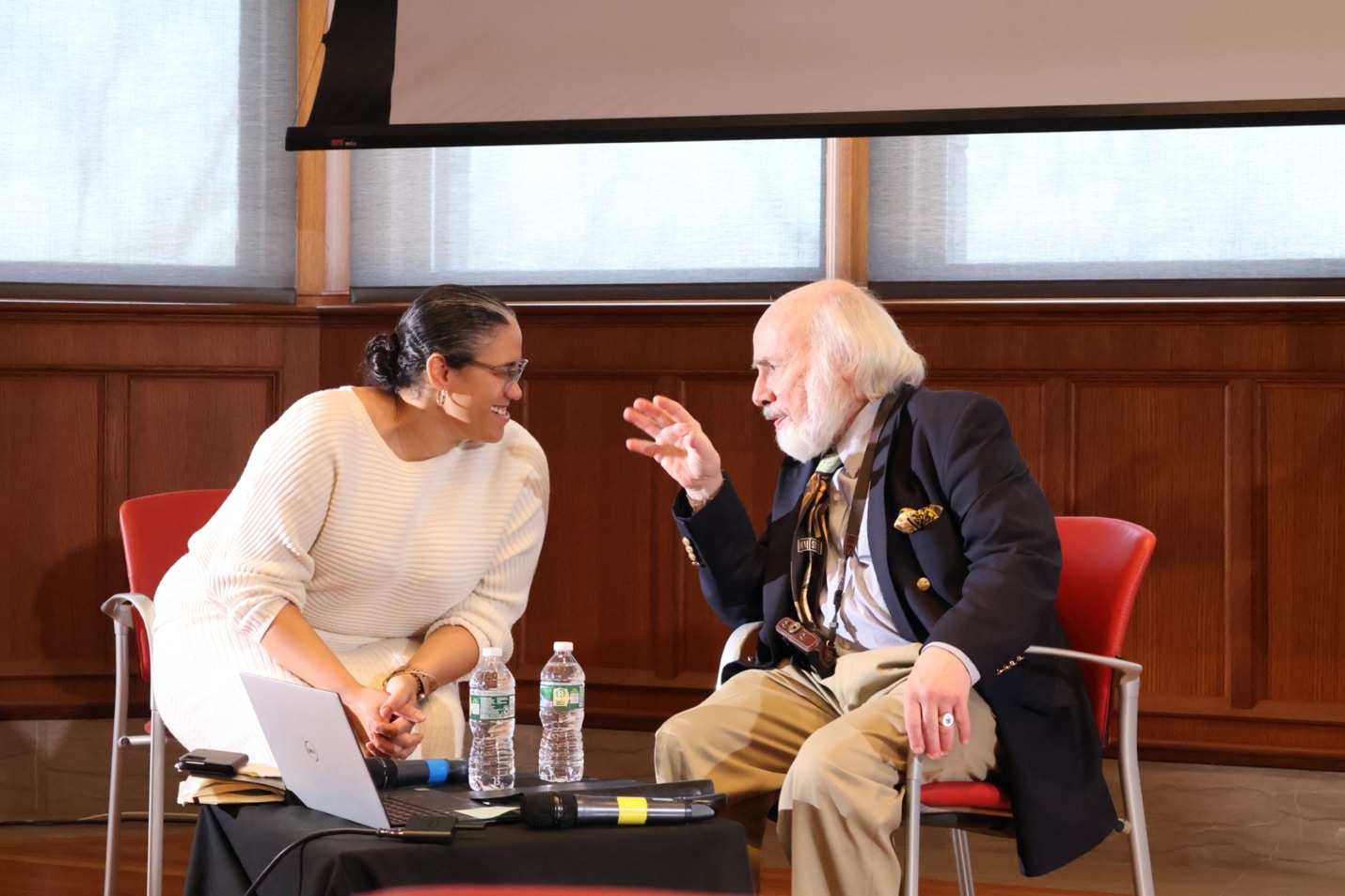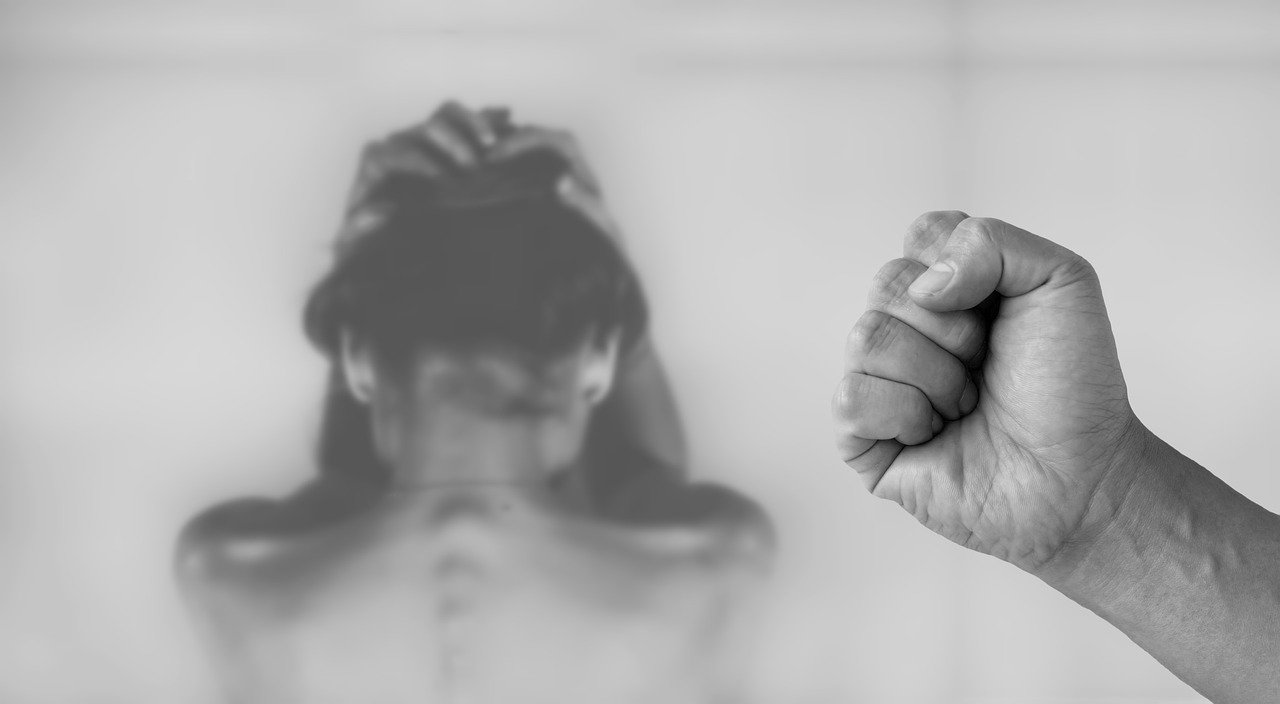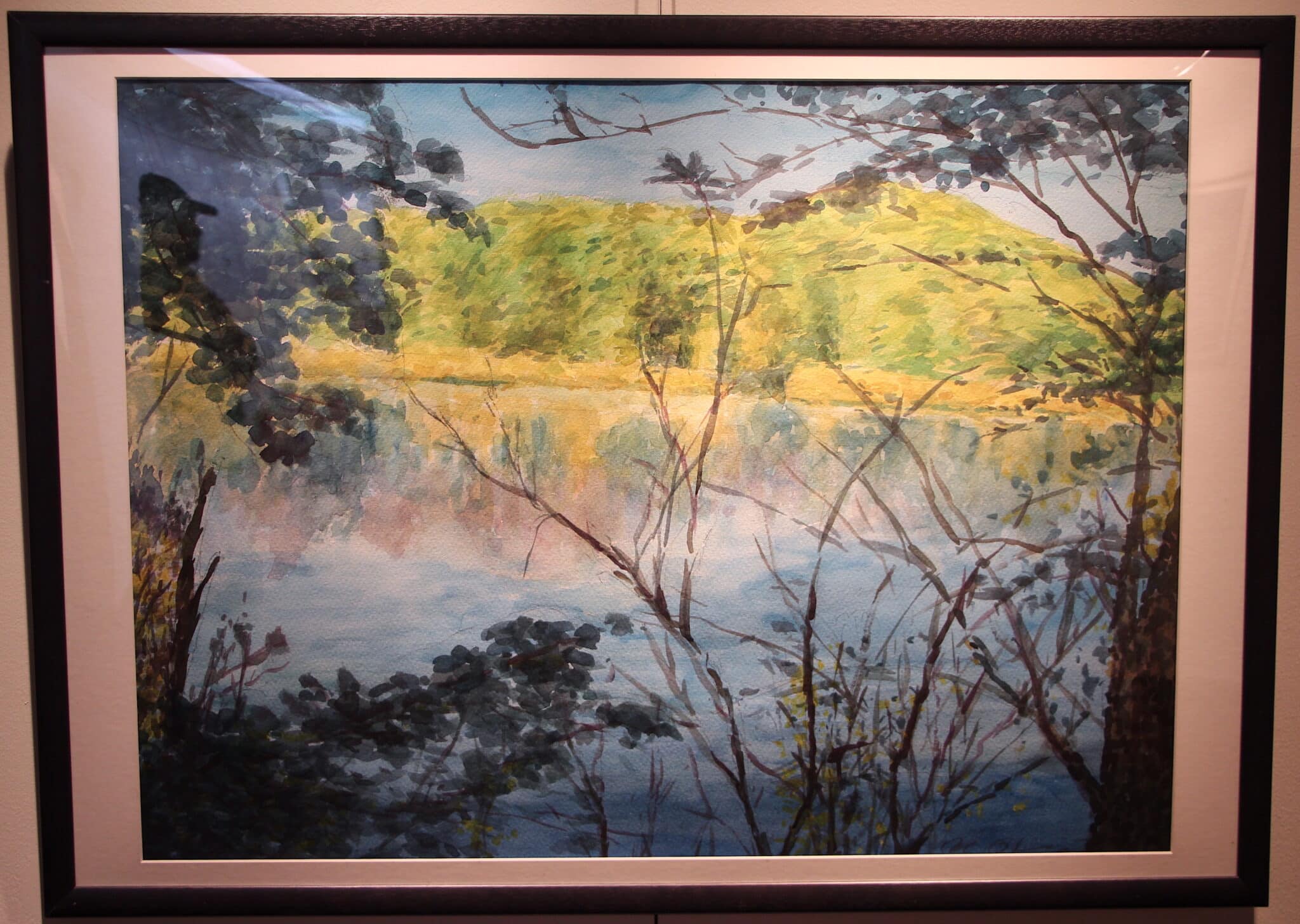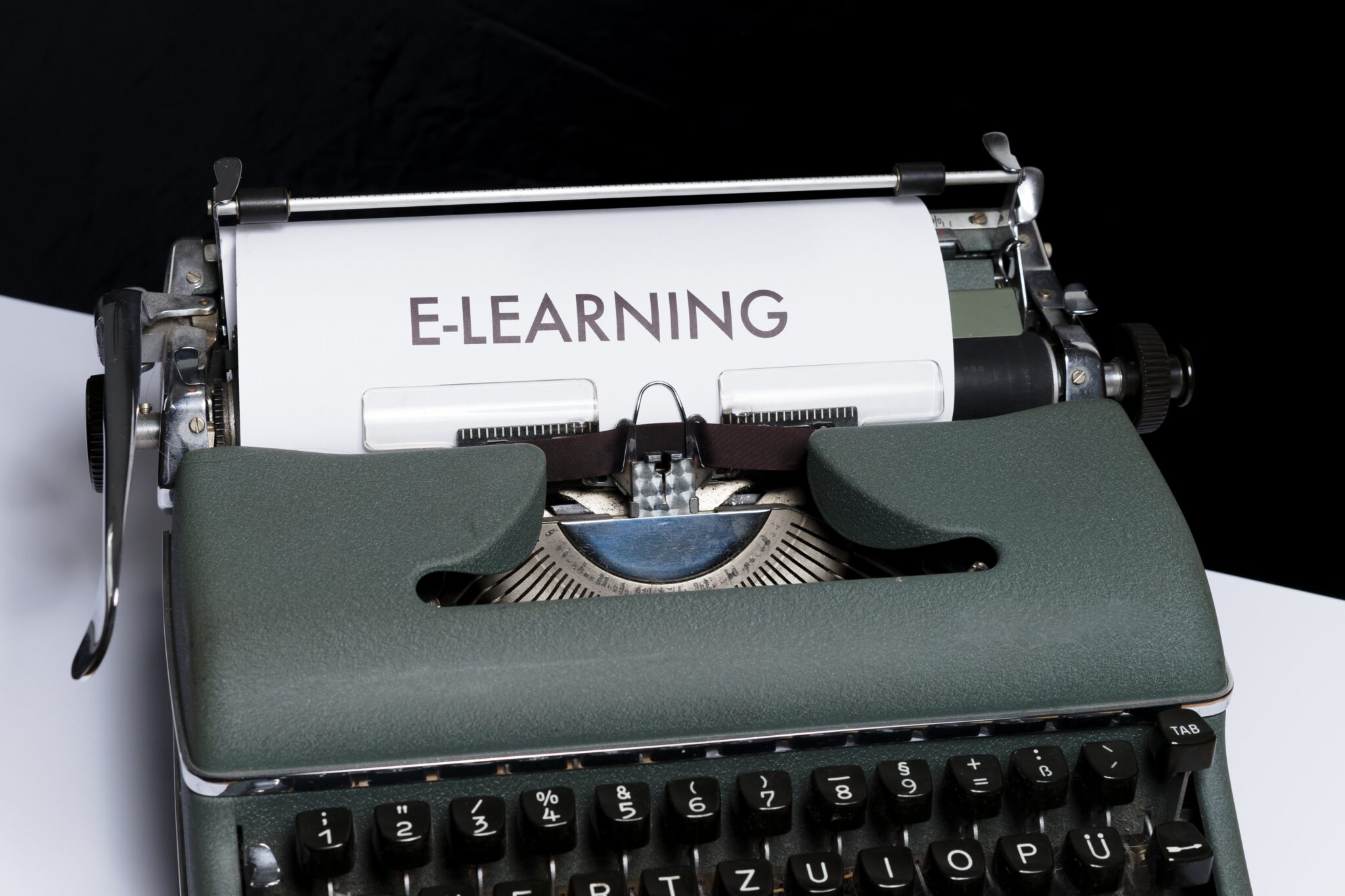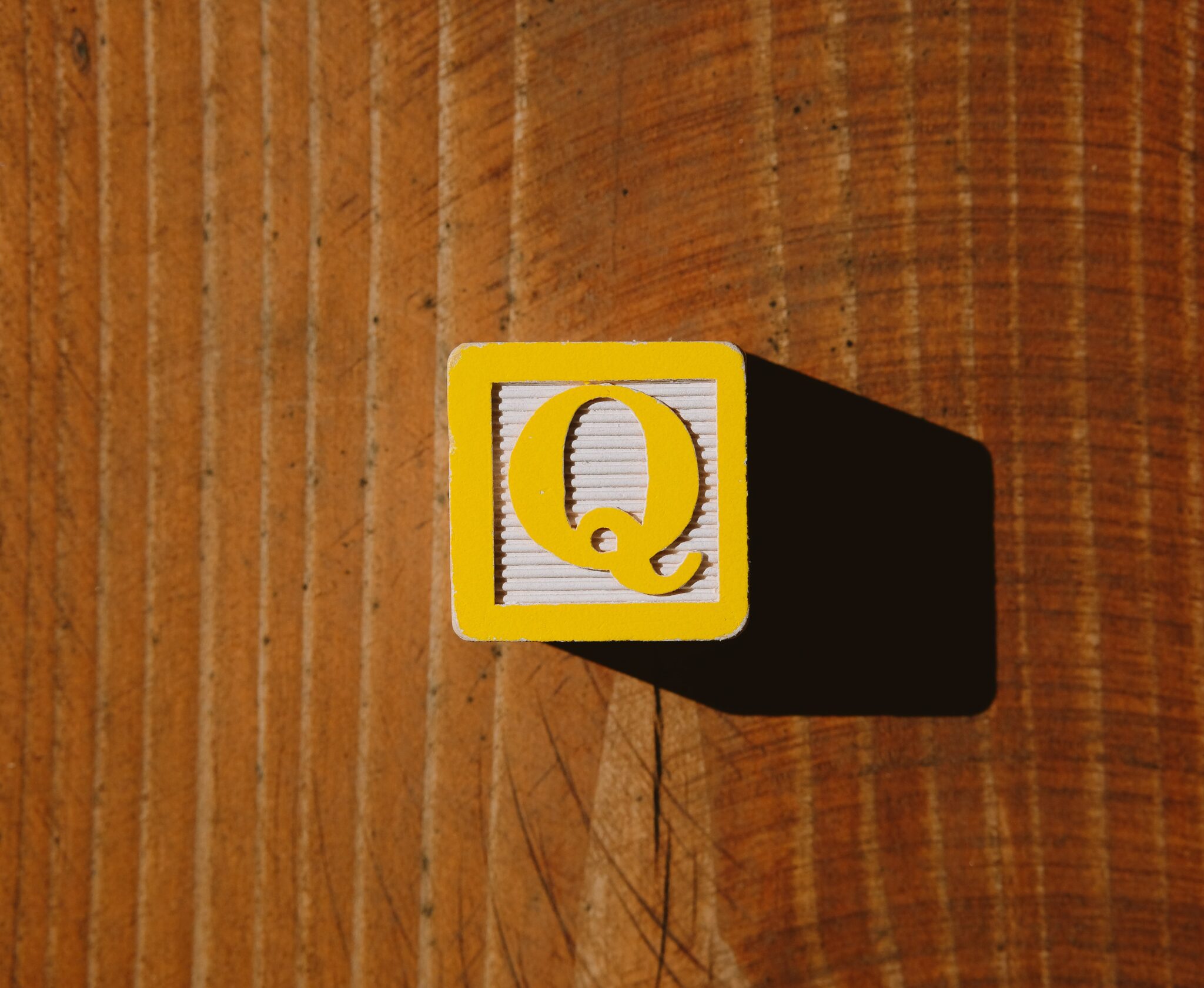Associate Provost Vanessa Valdez asked Stephen Somerstein about his experience photographing Dr. Martin Luther King and to paint a picture of what life was like for some CCNY students in 1963, 1964, and 1965 at CCNY’s event Witness to History. Photo by Chelah Marcano.
On March 20, 2023, faculty and alumni and several students gathered in room 305 in Shepard Hall to see historic civil rights era photos and hear from the photographer who took them. An event called Witness to History featured alumnus Stephen Somerstein who, in 1965 with other City College of New York (CCNY) students, traveled by bus to Alabama for the Selma to Montgomery March. Somerstein took photos of Dr. Martin Luther King, Jr., civil rights activists, marchers, and local people.

The talk began with a warm introduction by CCNY president Dr. Vincent Boudreau. President Boudreau spoke about the importance of the Selma March and said, “We’re thrilled that City College was there and that our students saw this as an important moment in their history and the nation’s history.”
Associate Provost Vanessa Valdez then led a discussion about the photographs and Somerstein’s experiences. Somerstein summarized his life as both a photographer and a nuclear physicist. In his professional life, he built space satellites for the Harvard Smithsonian Astrophysical Observatory and more recently designed optical instruments for the James Webb telescope. However documentary photography, which he started as a young man, became his true passion.
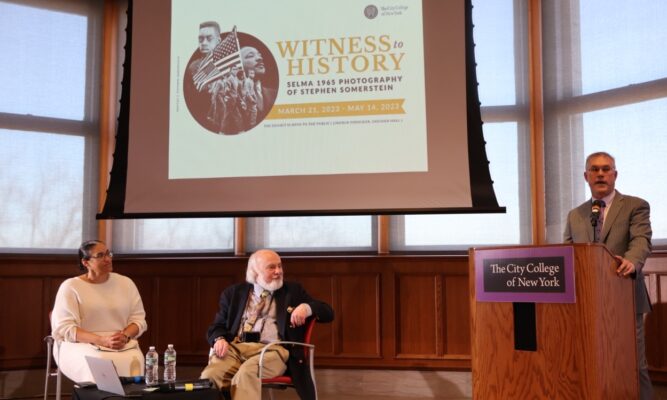
He showed his photo of Martin Luther King, Jr. at the 1963 City College graduation. “It was a great introduction for CCNY students to see Dr. King,” he said, and I brought the photograph in because it was my introduction to Dr. King.”
Dr. Valdez asked Somerstein to paint a picture of what life was like for some CCNY students in 1963, 1964, and 1965. “During that time we would have speakers come to campus,” he said. “This was a very diverse campus especially because we had different newspapers that represented different political factions.” He recalled visits by former President Harry Truman, activist Malcom X, former First Lady Eleanor Roosevelt, and American Nazi Party founder George Lincoln Rockwell. “I can remember in years that we have had all these speakers that not any speaker was prevented from speaking to students who were interested in debating,” he said.
Then he transitioned into the civil rights photos. He showed 50 slides, and each photo had a different story.
The photos were so captivating that at least one member of the audience audibly gasped when she saw the photo of Dr. King speaking to the marchers. The photographs told stories and showed the strong bond the marchers had with one another.
After the march, the New York Historical Society asked to exhibit Somerstein’s photos. “That began my whole new career in documentary photography,” he said. “Now I really had to take it seriously.”
Somerstein paused for an interview with us after the talk. He said, “Photographs are a reflex for me.” He explained that he didn’t think he could have told the story of the March in a written story, saying “I can tell the story much more adequately with my tools as a photographer.”
CCNY student Bianca Jones said, “I felt inspired to know that not only as a student at CCNY, but just as a person who has dreams, that it’s possible and to just believe in yourself.”
Abram Morris, another student said, “This was a snapshot into a moment in United States history when students were more unified against the forces of oppression in this country.” He too felt the power of the photos. “It was really inspiring to see the on-ground experiences,” he said.
That was the message Somerstein wanted to convey to everyone. He said he hoped people would gain inspiration.
Tags: #Shepard Hall CCNY CCNY Journalism Chelah Marcano Civil Rights Dr. Martin Luther King Jr. Martin Luther King Selma to Montgomery March Stephen Somerstein The City College of New York The Civil Rights. Movement Witness to History
